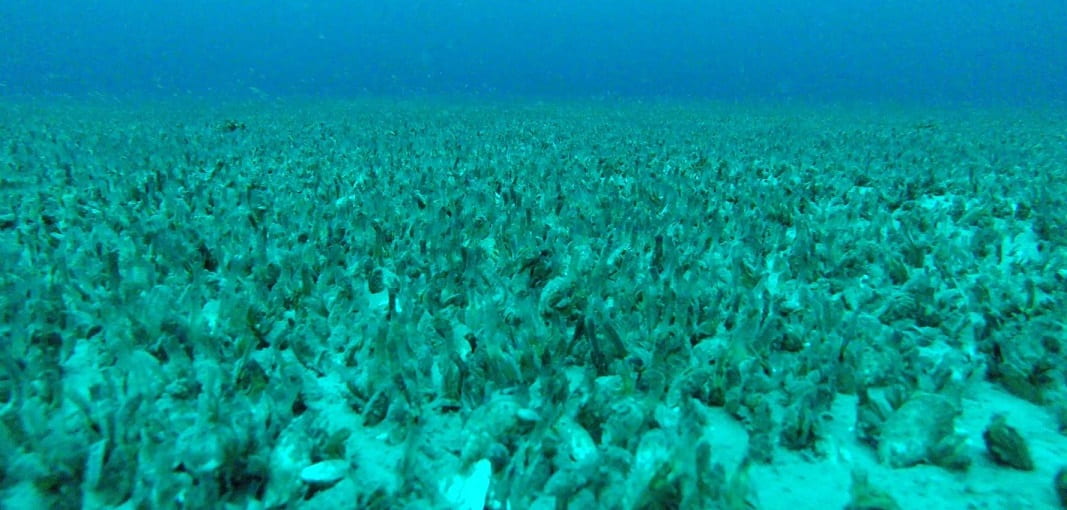Mussels, Carbon, Phosphorus and Physics
Invasive quagga mussels (Dreissena rostriformis bugensis) are present at extremely high densities in Lake Michigan and other Great Lakes. They have the capacity to filter large amounts of plankton from the water column, which may fundamentally alter the way carbon and phosphorus are cycled within the system. This has potentially important implications for nutrient management and fisheries management. However, because mussels are confined to the benthos (except when in the veliger stage), their ability to feed on plankton, and the fate of the nutrients they excrete, depends on hydrodynamics – vertical mixing within the water column, and mixing between nearshore and offshore waters. In this project we are quantifying plankton consumption and nutrient excretion / egestion by deep-water quagga mussels, and determining how hydrodynamics at scales from mm to km modulate the effects of these mussels on energy flow and phosphorus cycling in the lake. Our goal is to use the understanding gained from these studies to construct and parameterize physical and biogeochemical models for Lake Michigan. This project is being conducted through a collaborative effort of scientists at UW-Milwaukee and Purdue University.
Publications:
Shen, C., Q. Liao, and H. Bootsma. In press. Modelling the influence of invasive mussels on phosphorus cycling in Lake Michigan. Ecol. Model.
Cannon, D.J., C.D. Troy, Q. Liao, and H.A. Bootsma. 2019. Ice-free radiative convection drives spring mixing in a large lake. Geophys. Res. Lett. 46:6811-6820. https://doi.org/10.1029/2019GL082916.
Shen, C., Q. Liao, H.A. Bootsma, C.D. Troy, and D. Cannon. 2018. Regulation of plankton and nutrient dynamics by profundal quagga mussels in Lake Michigan: A one dimensional model. Hydrobiologia 815:47-63.
Troy, C., D. Cannon, Q. Liao, and H.A. Bootsma. 2016. Logarithmic velocity structure in the deep hypolimnetic waters of Lake Michigan. J. Geophys. Res.: Oceans. 121(1):949-965.
Mosley, C.M., and H.A. Bootsma. 2015. Phosphorus cycling and grazing by profunda quagga mussels in Lake Michigan. J. Great Lakes Res. 41 (Suppl. 3):38-48.
Tyner, E., H.A. Bootsma, and B. Moraska-Lafrancois. 2015. Dreissenid metabolism and ecosystem-scale effects as revealed by oxygen consumption.
Quagga mussels on the bottom of Lake Michigan at a depth of 55 meters.
Click on the image to the left to see a video produced by Wisconsin Sea Grant’s John Karl, describing how quagga mussels have altered nutrient and energy dynamics in Lake Michigan.







